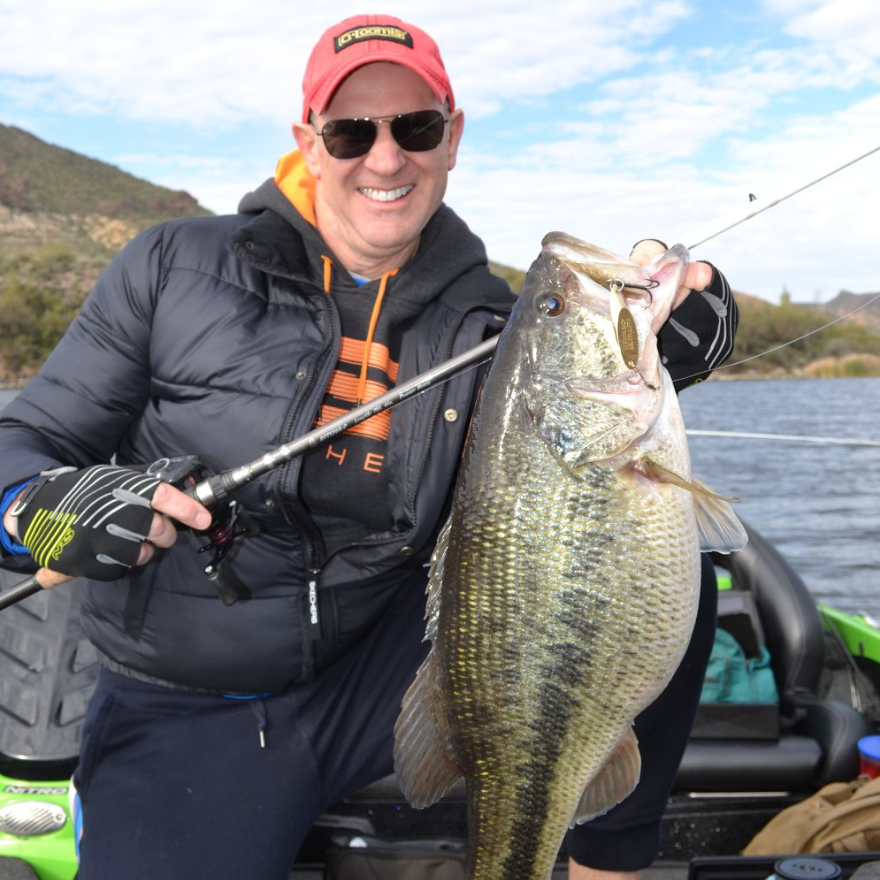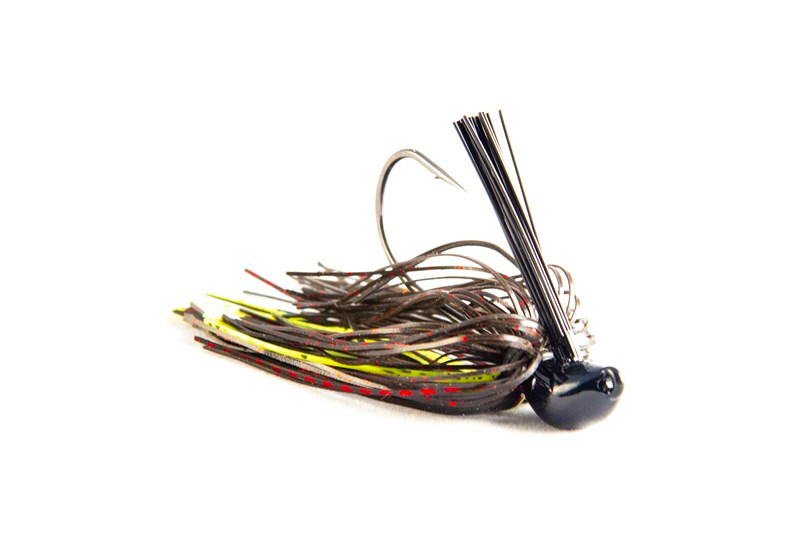How to Read Water Conditions to Pick the Right Bass Lures
Check out the Secrets Behind Effective Bass Lures to Enhance Your Fishing Experience
Recognizing the details of bass Lures can substantially affect fishing success. Numerous Lures serve unique purposes, from crankbaits made for large coverage to jigs that target certain structures. The efficiency of these Lures typically rests on factors such as shade, movement, and seasonal patterns. By mastering these aspects, fishermens can open an extra fulfilling experience. The question continues to be: which techniques will produce the finest outcomes on the water?
Comprehending Bass Actions and Habitat
Understanding the behavior and environment of bass is essential for anglers seeking success on the water. Bass are functional fish discovered in different freshwater environments, consisting of fish ponds, lakes, and rivers. They often tend to prefer locations with framework, such as immersed rocks, fallen trees, and marine greenery, which provide shelter and hunting premises.
Seasonal patterns considerably affect their behavior; in warmer months, bass usually live in shallow waters, while they retreat to deeper areas throughout colder periods. Best Bass Fishing Lures. Their feeding habits are opportunistic, with a diet being composed primarily of smaller fish, bugs, and crustaceans
Time of day likewise contributes; bass are extra energetic during late nights and very early mornings. Climate conditions can influence their habits too, as overcast days may encourage superficial feeding, whereas intense sunshine frequently drives them to seek cover. Identifying these patterns gears up anglers with the knowledge needed for effective angling techniques.
Kinds of Bass Lures and Their Makes use of
A range of bass Lures are crucial tools for anglers aiming to attract this preferred video game fish. These Lures can be classified right into a number of types, each offering unique purposes. Crankbaits, created to imitate the swimming action of baitfish, are reliable for covering huge locations promptly. Spinnerbaits, including turning blades, produce resonances and flashes that can lure bass hiding in cover. Jigs, with their hefty heads and weedless design, are optimal for lower fishing, permitting anglers to present lure near structures where bass usually prowl. Soft plastics, such as worms and animal baits, provide versatility and can be rigged in several means to adapt to varying problems. Topwater lures, like poppers and frogs, are best utilized throughout low-light hours when bass are proactively feeding upon the surface. Each type of lure plays an important duty in boosting fishing experiences and increasing the possibility of successful catches.

Color and Style: What Attracts Bass?
What aspects influence bass attraction to specific lure shades and layouts? The interplay of light, water quality, and the natural surroundings plays a crucial function. Intense shades, such as chartreuse and orange, can capture a bass's eye in dirty waters, while extra suppressed tones like blues and environment-friendlies may stand out in clear conditions.
Design elements, consisting of shape and activity, additionally considerably impact bass attraction. Lures that resemble natural victim, such as baitfish or crawfish, are particularly effective. Additionally, the presence of sensible details, like fins or ranges, enhances the realistic look, more luring bass.
Emotional factors, such as a bass's feeding habits and territorial reactions, need to not be forgotten. In certain circumstances, vibrant designs can prompt a reaction from aggressive bass, while refined variants can attract extra careful fish. Eventually, understanding shade and layout subtleties is important for enhancing attraction performance.
Matching Lures to Water Conditions
Picking the best appeal involves greater than just design and color; water problems play a significant duty in establishing the most reliable alternatives. Variables such as water depth, temperature, and quality directly influence bass actions and their feeding patterns. In clear water, subtle discussions and natural shades have a tendency to be more effective, while murky problems might ask for brighter, extra vivid Lures that can attract attention.
Temperature likewise affects bass activity; during warmer months, faster-moving Lures can elicit strikes, whereas cooler temperatures may need slower, a lot more calculated discussions. Additionally, deeper waters often require much heavier Lures that can reach the wanted deepness, while superficial locations are much better fit for lighter, surface-oriented options.
Techniques for Reliable Lure Discussion
Grasping the techniques for efficient appeal discussion can considerably boost fishing success. Fishermens should concentrate on see this the rate and rhythm of their retrieves, adjusting them to resemble the all-natural activity of target. A constant recover works well for several attractions, but integrating pauses can cause strikes from a lot more careful fish. Additionally, varying the depth of the lure is crucial; using different casting angles and changing the reel can help target fish at different depths.
Utilizing a mix of finesse discussions, such as twitching or dragging the lure across the base, can also work. It is important for anglers to check out the water and change their strategies based on visibility and framework. Providing Lures near cover, like immersed rocks or plants, usually yields better results, as bass often tend to look for shelter. Eventually, try out different strategies will result in a much more rewarding fishing experience.
Seasonal Factors To Consider for Lure Option
Seasonal modifications significantly affect bass habits and appeal effectiveness. As water temperatures vary, anglers must adjust their attraction options to straighten with pre-spawning and post-spawn problems. Comprehending these seasonal patterns can boost fishing success by targeting bass at their most energetic times.
Seasonal Water Temperature Effects
As water temperatures vary throughout the year, bass habits and feeding patterns change, affecting the performance of different attractions. Throughout colder months, bass tend to become inactive, preferring slow-moving Lures that mimic having a hard time target. On Continue the other hand, as temperatures climb in springtime, bass come to be more energetic, making faster, more aggressive Lures reliable. Mid-summer sees bass seeking much deeper, cooler waters, requiring the usage of Lures that can get to these midsts. As temperatures begin to drop in fall, bass often feed greatly to prepare for winter, making versatile Lures that can mimic a range of forage kinds specifically successful. Comprehending these seasonal temperature effects enables fishermens to choose suitable Lures that align with bass habits, maximizing their angling success.
Pre-Spawning Tempt Choices
What factors influence the selection of Lures throughout the pre-spawning period for bass? Fishermens must think about water temperature, climate condition, and the bass's feeding behavior. As temperature levels rise and days extend, bass become much more active and hostile, prompting a change in their feeding patterns. Throughout this time around, entices that mimic the all-natural target of bass-- such as shad or bluegill-- are especially reliable. Popular options consist of spinnerbaits, lipless crankbaits, and jigs, which can be fished at various midsts. In addition, anglers must concentrate on areas with cover, such as submerged plants or rocky structures, as these areas usually attract pre-spawn bass. Bass Lures. Recognizing these elements can substantially improve the opportunities of an effective fishing journey during this critical seasonal phase
Post-Spawn Techniques Adjustments
Although post-spawn bass exhibit various behaviors than throughout the pre-spawn stage, effective appeal option stays critical for anglers intending to target them efficiently. After generating, bass usually become tired and seek deeper waters, making it vital to change attraction options appropriately. Fishermens need to consider making use of slower-moving baits, such as jigs or soft plastics, which can entice bass that are less hostile. Crankbaits with a refined activity can also be effective, enabling for a slower presentation that resembles the all-natural post-spawn forage. Furthermore, angling near structure, such as immersed plant life or rocks, can increase possibilities of see this site success. By recognizing these seasonal modifications, anglers can enhance their angling experience and enhance their catch rates during the post-spawn period.
Often Asked Questions
How Do I Choose the Right Rod for Bass Angling?
To choose the best pole for bass fishing, one should take into consideration the rod's action, size, and power. A medium to medium-heavy pole, around 6 to 7 feet, is usually excellent for adaptability and control.

What Is the most effective Time of Day to Capture Bass?
The most effective time of day to catch bass is generally morning and late mid-day. Throughout these durations, bass are much more energetic, feeding near the surface area, making them much easier targets for fishermens using reliable attractions.
How Do Climate Condition Influence Bass Angling Success?
Climate condition substantially influence bass angling success. Warmer temperature levels and overcast skies frequently urge bass activity, while cold spells can create sleepiness. Rain can likewise boost feeding actions, making it important for anglers to adapt their strategies accordingly.
Can I Utilize Lures for Other Fish Species?
Yes, tempts created for bass can also work for other fish varieties. Picking the proper size, color, and activity according to the target varieties and their feeding habits stays essential for success.
What Are Common Blunders When Using Bass Lures?
Usual mistakes when using bass Lures consist of choosing improper dimensions or colors, obtaining as well swiftly, failing to adapt to climate condition, and not considering water deepness. These mistakes can significantly decrease the chances of a successful catch.
As water temperature levels fluctuate throughout the year, bass habits and feeding patterns alter, influencing the effectiveness of various attractions. Mid-summer sees bass seeking deeper, cooler waters, requiring the use of Lures that can reach these depths. Post-spawn bass display different actions than during the pre-spawn stage, efficient lure option remains critical for anglers intending to target them efficiently. After generating, bass usually come to be lethargic and look for much deeper waters, making it vital to readjust appeal selections as necessary. Typical mistakes when making use of bass Lures consist of picking unacceptable dimensions or colors, fetching too swiftly, failing to adapt to weather problems, and not taking into consideration water deepness.